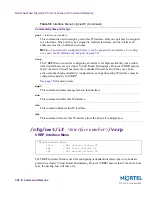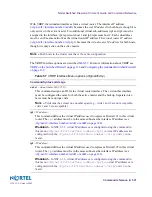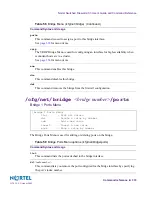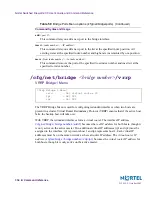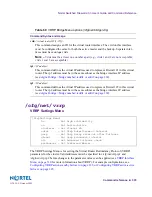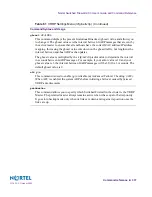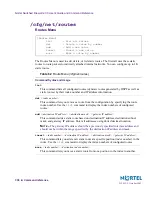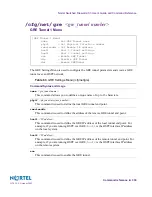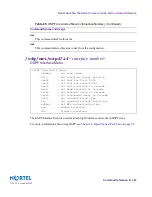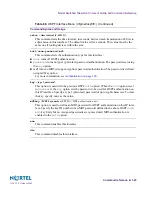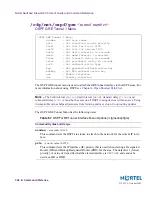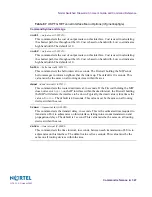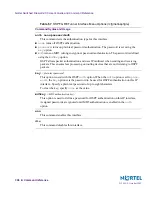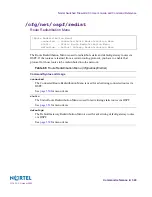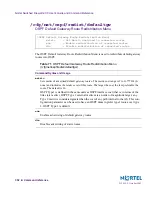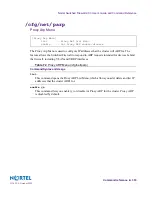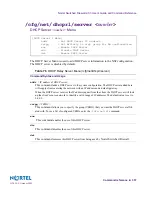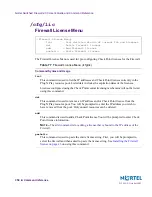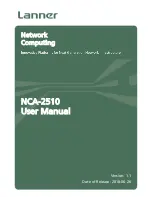
Nortel Switched Firewall 2.3.3 User’s Guide and Command Reference
344
Command reference
213455-L, October 2005
N
OTE
–
The hello interval (hello), dead interval (dead), transmit interval (trans) and retransmit
interval (retra) must be the same on all OSPF routing devices within an area. Using
incompatible values could keep adjacencies from forming and could stop or loop routing
updates
.
Table 66
OSPF Interface Menu (/cfg/net/ospf/if>)
Command Syntax and Usage
aindex
<area index (1-16)>
This command sets the OSPF area index to attach to the network for the current IP inter-
face.
prio
<priority value (0-127)>
This command sets the IP interface (IF) priority that is used when electing a Designated
Router (DR) and Backup Designated Router (BDR) for the area. The default is 1 (lowest
priority). A value of 0 specifies that the elected interface is DROTHER and cannot be
used as a DR or BDR.
cost1
<output cost (1-65535)>
This command sets the cost of output routes on this interface. Cost is used in calculating
the shortest path tree throughout the AS. Cost is based on bandwidth. Low cost indicates
high bandwidth. The default is 1.
cost2
<output cost (1-65535)>
This command sets the cost of output routes on this interface. Cost is used in calculating
the shortest path tree throughout the AS. Cost is based on bandwidth. Low cost indicates
high bandwidth. The default is 1.
hello
<hello interval(1-65535)>
This command sets the hello interval in seconds. The switch sends hello messages to
inform neighbors that the link is up. The default is 10 seconds. This value must be the
same on all routing devices within the area.
dead
<dead interval (1-65535)>
This command sets the router dead interval, in seconds. If the switch does not receive
hello
on the IP interface within the dead interval, the switch will declare the interface
to be down. Typically, the dead value is four times the value of
hell
o. The default is 40
seconds. This value must be the same on all routing devices within the area.
trans
<transmit delay (1-65535)>
This command sets the transmit delay, in seconds. This is the estimated time required to
transmit an LSA to adjacencies on this interface, taking into account transmission and
propagation delays. The default is 1 second. This value must be the same on all routing
devices within the area.

